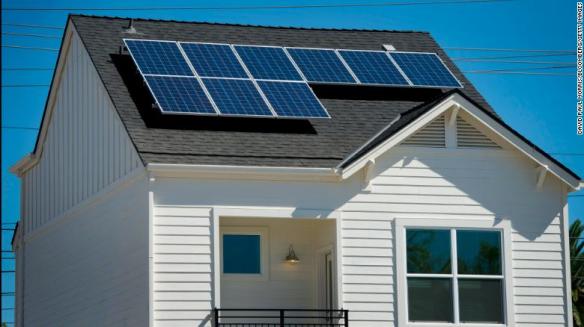
Since 2011, a national electric car event has been held every year. Originally called National Plug In Day, it later expanded to become National Drive Electric Week. It’s actually nine days long, as it includes weekends on both ends.
This year, I participated in two events. First, I hosted one at work for fellow employees, and later, I attended another, larger event, where I let people drive my 2017 Chevrolet Bolt EV to experience electric motoring firsthand.
Marketo Event, San Mateo, CA
Marketo hosted its second annual National Drive Electric Week event on Thursday, September 13th. The weather cooperated, and the event went off without a hitch, although attendance was lower than anticipated. It’s understandable, though—people are working!

Me with my Chevrolet Bolt EV–now an NDEW show veteran.
Display cars included three Tesla Model 3s, a Tesla Model X, my freshly washed Chevrolet Bolt EV, a Nissan LEAF, a Volkswagen e-Golf, a BMW i3, and a Chevrolet Volt. One of the Model 3s was available for rides.
Allyson Gaarder from the Clean Vehicle Rebate Project showed attendees how they could receive California rebates for buying a variety of electric cars.
Vehicle owners gave attendees a tour of their cars and enjoyed talking with each other about the pleasures of electric motoring.
Nissan supplied some swag, including water bottles, mini backbacks, pens, and tiny fans that attach to your phone. Attendees received a red token good for a $5 discount at the adjacent food trucks.
Acterra Event, Palo Alto, CA
On the last Sunday of Summer, Acterra, the Palo Alto environmental nonprofit, hosted its third annual National Drive Electric Week event. Acterra’s mission is to bring people together to create local solutions for a healthy planet, and they always put on a great show.

Nissan brought a fleet of LEAFs for show and driving.
EV enthusiasts shared their favorite electric rides with eager attendees. Booths provided information about rebates, vehicle charging, and a solar energy vendor presented solar options. Allyson was there with her booth and California rebate information. Event sponsor Nissan brought a small fleet of new LEAFs for show and drives.
I watched the parking lot fill with Chevrolet Bolt EVs, BMW i3s, Nissan LEAFs, Tesla Model 3s, and even a low, sleek Fisker Karma. One guy brought his now rare Honda Fit Electric, and there was at least one tiny Chevy Spark EV and a cute little Fiat 500e.
This was a popular event. Altogether there were 70 vehicles, representing 15 makes and models. More than 260 people registered and vehicle owners and fleets conducted more than 520 rides or drives!
The beauty of these events, which Acterra hosts year-round, is the chance to learn about and sample multiple EVs in the same location, away from aggressive salespeople. With EVs, the owners are often more knowledgeable about the cars than a typical dealership employee, and they can certainly talk about day-to-day life with a plug-in vehicle.
This event is both a car show and a ride-and-drive. Although it’s a little annoying to have to to readjust my seat and mirror settings when the day’s over, and having strangers drive your car can be a little nerve wracking, I like to let attendees get a personal feel for what driving an electric car is like.

Luckily, all the people who took the wheel of my car were competent, responsible motorists, so I didn’t have any worry the entire afternoon. With high demand, I was busy non-stop.
In most cases, I took the people for a ride around the short test loop, and then had them drive it. I felt it would make them more comfortable, and it let me explain the features first. Luckily, the Bolt itself is pretty straightforward and controls are where you expect them.
People were surprised at the Bolt’s spacious interior, especially the generous headroom. One 6-4 gentleman pulled the seat all the way back and then forward a little! My drivers were also impressed with the video camera rear-view mirror, which gives a wider, clearer view than a regular mirror.
When driving, my guests were fascinated by the low or high brake regeneration. If the transmission lever is in “D,” when you lift your foot off the accelerator, you keep rolling along, like with a normal automatic. In “L” mode, as you lift up your foot, the electricity flow is reduced, slowing the car. This lets you do “one-pedal driving.” It’s a wonderful way to maintain extra control of your car while generating extra battery power and saving your brake pads.
At 4 p.m., we assembled inside the Acterra offices for the official launch of the newly renamed Karl Knapp Go EV program. Knapp, a beloved Stanford science professor of Civil and Environmental Engineering, promoted electrified cars and motorcycles for many years, and has been an inspiration to many. We had some food and drinks and watched a short video about Karl. Sadly, Professor Knapp is ill and was unable to attend.
After the reception, I gave three more people rides, so I was one of the last to leave. It’s fun to share your EV, and I hope all of my drivers will go out and get their own! Electric cars are the future, and soon there will be many more choices.
National Drive Electric Week is presented by Plug In America, the Sierra Club, and the Electric Auto Association. Sponsors include the Nissan LEAF (Platinum), Clipper Creek (Silver), and eMotorWerks (California Regional).







